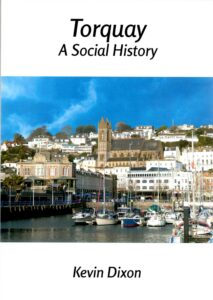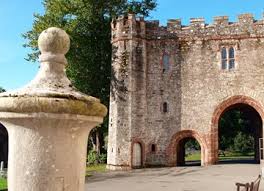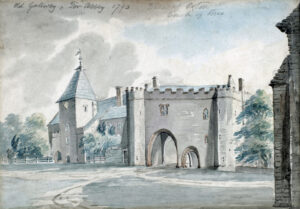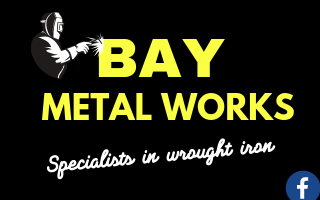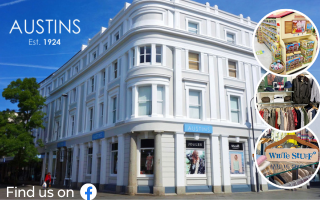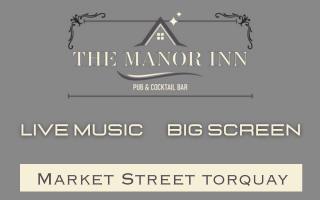In 1667 Torquay was attacked by two Dutch warships.
We know this from a letter dated 19 July 1667 which reported that:
“Hear that the Dutch have made an attempt at Torbay: they fired two small barques (a ship with three or more masts) at Torquay and shot at a gentleman’s house near the water but have now retreated.”
It’s believed that the house in question was Torre Abbey. Supporting this assumption was the later discovery of cannon balls found in the Abbey grounds.
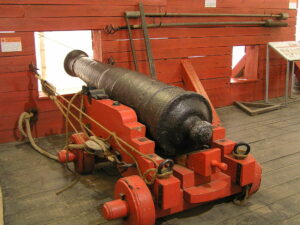 The attack appears to be a hit-and-run affair with no attempt made to land troops and pillage the small undefended communities of the Bay. We may have got off lightly and we’ll come on to the reasons for our escape later.
The attack appears to be a hit-and-run affair with no attempt made to land troops and pillage the small undefended communities of the Bay. We may have got off lightly and we’ll come on to the reasons for our escape later.
Following that incident, the Bay was made ready for any Dutch return: “The place is in good condition having 150 guns, 1,500 landsmen, and 800 seamen”. This probably refers to the whole of Devon rather than just the Bay.
So why would the Dutch – land of tulips and windmills – have shot up a peaceful backwater like Torquay?
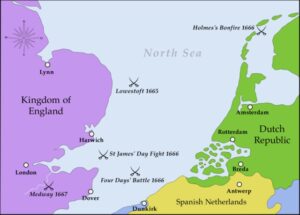 The Torquay attack seems to have been a side show in the Anglo-Dutch Wars. These were the four seventeenth- and eighteenth-century naval conflicts between England and the Dutch Republic.
The Torquay attack seems to have been a side show in the Anglo-Dutch Wars. These were the four seventeenth- and eighteenth-century naval conflicts between England and the Dutch Republic.
The attack on Torre Abbey came at the end of the Second Anglo-Dutch War of 1665–67. Hostilities had begun in 1664 and the English had already captured New Amsterdam in the Americas (which was renamed, only once, as New York).
England declared war in March 1665 and won a victory over the Dutch off Lowestoft in June. Most subsequent battles, however, were won by the Dutch. Meanwhile, England’s ally, the principality of Münster, sent troops into Dutch territory in 1665 but was forced out of the war in the following year by France which had sided with the Dutch.
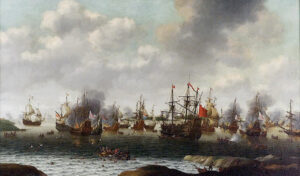 After some initial successes, however, things went badly for the English. The plague in 1665 and the Great Fire of London in 1666 contributed to our problems. These setbacks culminated in the humiliating Dutch ‘Raid on the Medway’ in June 1667.
After some initial successes, however, things went badly for the English. The plague in 1665 and the Great Fire of London in 1666 contributed to our problems. These setbacks culminated in the humiliating Dutch ‘Raid on the Medway’ in June 1667.
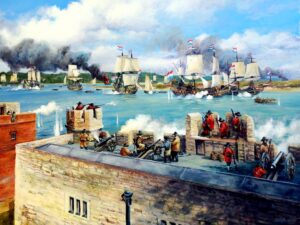 A flotilla of ships led by Holland’s Admiral de Ruyter broke through the defensive chains guarding the Medway. The Dutch the burned part of the English fleet docked at Chatham and towed away ‘The Unity’ and ‘The Royal Charles’, pride and flagship of the English fleet.
A flotilla of ships led by Holland’s Admiral de Ruyter broke through the defensive chains guarding the Medway. The Dutch the burned part of the English fleet docked at Chatham and towed away ‘The Unity’ and ‘The Royal Charles’, pride and flagship of the English fleet.
 The war ended the following month with the Treaty of Breda and it was accepted that the Dutch had been the victors. The greatly expanded Dutch navy was then for many years the world’s strongest, and the Dutch Republic was at the zenith of its power.
The war ended the following month with the Treaty of Breda and it was accepted that the Dutch had been the victors. The greatly expanded Dutch navy was then for many years the world’s strongest, and the Dutch Republic was at the zenith of its power.
The first three wars, caused by commercial rivalry, established England’s naval might while the last, arising from Dutch interference in the American Revolution, led to the end of the Dutch Republic’s position as a world power.
There was a Fourth Anglo-Dutch War between 1780 and 1784 in which we did rather better. Then, largely unchallenged as a sea power, the British could fully dedicate themselves to the building of Empire.
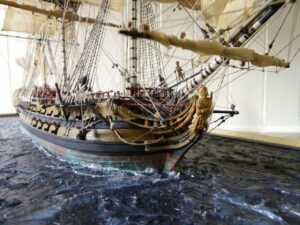 It looks like that Torquay hit-and-run attack was a diversionary tactic and one of the last actions in that long-forgotten conflict.
It looks like that Torquay hit-and-run attack was a diversionary tactic and one of the last actions in that long-forgotten conflict.
The question arises about whether the Dutch did intend to land and pillage but decided against that course of action. So what stopped them. One suggestion is that, through their telescopes, they saw what they thought was Torquay’s castle. It was, of course, the gatehouse of Torre Abbey.
Torre Abbey is unusual in that it has had a crenellated gatehouse meaning that it was a fortified coastal ‘monastery’. Gatehouses of religious institutions were not generally designed to serve a defensive function, but our Abbey was an exception.
In medieval England a licence was required to ‘crenellate’, or to install a battlement which has gaps to allow for the launching of arrows or other projectiles. These gaps are termed ‘crenels’, the word sharing its origins with cranny, meaning ‘a small opening’.
If you visit today you will see that access to the inner part of the Abbey was provided a double-chambered gate hall, one access for vehicles and the other for pedestrians. There were originally two gatehouses. They were controlled by wicket-gates, the hinges and boltholes can still be seen. The gatehouse provided accommodation, both first and second floors being divided into at least two chambers with fireplaces, while the ground floor porter’s lodge had a fireplace and space for a bed.
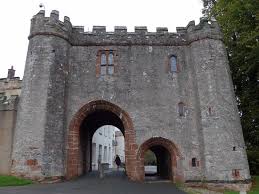 And our Abbey’s gatehouse is clearly a functional structure. It doesn’t appear to have ever featured any sculpture or decoration on any façade and the three surviving round turrets have narrow window slits and hand-cannon loops.
And our Abbey’s gatehouse is clearly a functional structure. It doesn’t appear to have ever featured any sculpture or decoration on any façade and the three surviving round turrets have narrow window slits and hand-cannon loops.
Torre Abbey was fortified to withstand a full-scale attack, the main threat being occasional raiding. Indeed, as it is so close to the house, the gatehouse may have been built as a defensible retreat during raids. As the gun-loops are mainly positioned to provide a field of view southward and westward, the gatehouse covered the seaward side of the Abbey covering the shore and quay and the causeway, now Kings Drive, from the main gate. The gatehouse builders expected an assault to come from the sea.
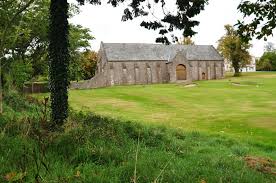 Accordingly, the gatehouse doesn’t present the appearance of a church, but of a small fortress deigned to kill any hostile persons avoiding the marshland where the golf course now is and approaching along the narrow causeway from the sea.
Accordingly, the gatehouse doesn’t present the appearance of a church, but of a small fortress deigned to kill any hostile persons avoiding the marshland where the golf course now is and approaching along the narrow causeway from the sea.
By 1667 the Mohun gatehouse was the only surviving defensive part of the building, but originally there was a stone wall surrounding the Abbey. It would have been some time after the Abbey was disestablished in 1539 that the gatehouse and Abbey were finally stripped of their defences.
Nevertheless, the Dutch would have seen a large fortified building, likely well garrisoned, well able to withstand a siege until English reinforcements arrived.
Yet by 1667, the gatehouse was pretty much derelict and unoccupied.
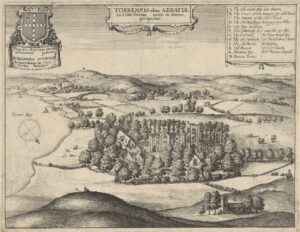 On 1 August 1635 a letter was sent from aboard a ship called ‘The James’. It was sent, “by your honours most faithful servant Will Monson” and addressed to Sir Francis Windebancke, Secretary of State. It contained the following passage:
On 1 August 1635 a letter was sent from aboard a ship called ‘The James’. It was sent, “by your honours most faithful servant Will Monson” and addressed to Sir Francis Windebancke, Secretary of State. It contained the following passage:
“We departed from Plymouth the 26th of July. But in our way I desired my Lord to look into Torbay, being informed of many abuses there comytted to the prejudice of the King’s service (as namely), that an auncyent castle being there seated that commanded part of the Road is quite abolished, and the iron peeces made into horse shoes.”
But the gatehouse and the nearby Spanish Barn would still have looked a quite impressive ‘castle’ when viewed from out at sea.
It wouldn’t be the first time that the derelict Abbey saved Torquay from raiders, and it wouldn’t be the last.
‘Torquay: A Social History’ by local author Kevin Dixon is available for £10 from Artizan Gallery, Lucius Street, Torquay, or:
https://www.art-hub.co.uk/product-page/torquay-a-social-history-by-kevin-dixon